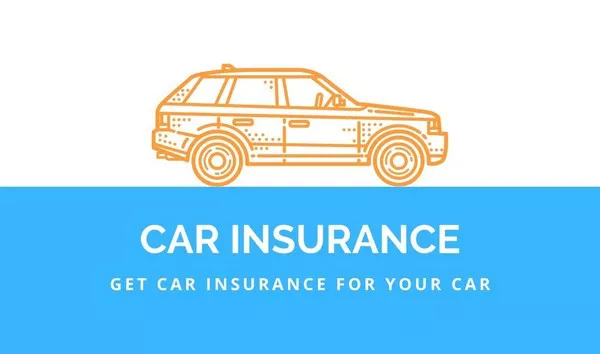Car insurance is essential for protecting drivers financially in case of accidents or other incidents on the road. However, not all aspects of potential losses are covered by standard insurance policies. Uninsured losses refer to expenses or damages incurred by the policyholder that are not covered by their insurance policy. Understanding uninsured losses is crucial for motorists to ensure they are adequately protected in all situations.
What are Uninsured Losses?
Uninsured losses encompass a wide range of expenses that are not covered by a standard car insurance policy. These losses can arise from various situations, including accidents, theft, or damage to property not covered by insurance. While insurance policies typically cover damages to the insured vehicle and liabilities towards third parties, uninsured losses extend beyond these protections.
Types of Uninsured Losses
1. Personal Injury Expenses:
Injuries sustained by the driver or passengers may result in medical expenses, rehabilitation costs, or lost wages. While personal injury protection (PIP) or medical payments coverage may cover some of these costs, they may not fully compensate for all losses, especially if the injured party is unable to work for an extended period.
2. Damage to Personal Property:
Items inside the vehicle, such as electronic devices, luggage, or personal belongings, may be damaged or stolen during an accident or theft. Standard car insurance policies typically do not cover these losses unless additional coverage, such as contents coverage, is purchased.
3. Excess Deductibles:
When filing an insurance claim, policyholders are often required to pay a deductible before coverage kicks in. However, if the other driver is at fault and their insurance does not cover all damages, the policyholder may be responsible for paying the deductible out of pocket.
4. Loss of Use:
If the insured vehicle is damaged and requires repairs, the policyholder may incur expenses for alternative transportation, such as renting a car or using public transit. While some insurance policies offer rental reimbursement coverage, it may have limits or exclusions that leave the policyholder responsible for additional expenses.
5. Legal Fees:
Disputes with insurance companies, other drivers, or third parties may require legal representation, leading to attorney fees and court costs. Unless the policy includes coverage for legal expenses, these costs may not be covered by standard insurance policies.
6. Diminished Value:
Even after repairs, a vehicle’s resale value may decrease due to its history of damage. This diminished value represents a loss that is not typically covered by insurance policies, leaving the policyholder to bear the financial burden.
Importance of Protecting Against Uninsured Losses
While uninsured losses may seem like additional expenses, failing to address them adequately can have significant financial consequences for motorists. Without proper coverage, policyholders may find themselves facing substantial out-of-pocket expenses, which can strain their finances and disrupt their lives.
Moreover, the potential for uninsured losses underscores the importance of reviewing insurance policies regularly and considering additional coverage options. By understanding the extent of their insurance coverage and identifying potential gaps, motorists can take proactive steps to mitigate risks and protect themselves against unforeseen losses.
Strategies for Managing Uninsured Losses
1. Review Insurance Policies:
Regularly review existing insurance policies to understand coverage limits, exclusions, and potential gaps in protection. Consider consulting with an insurance agent or advisor to ensure adequate coverage based on individual needs and circumstances.
2. Explore Additional Coverage:
Investigate supplemental insurance options, such as personal injury protection, comprehensive coverage, or umbrella insurance policies, to fill gaps in standard coverage and provide added financial protection against uninsured losses.
3. Document Expenses and Damages:
Keep detailed records of any expenses incurred as a result of accidents or incidents, including medical bills, repair estimates, rental car receipts, and legal fees. Documentation will facilitate the claims process and help substantiate losses with insurance companies.
4. Consider Legal Assistance:
In cases involving disputes with insurance companies or third parties, consider seeking legal advice to understand rights and options for pursuing compensation for uninsured losses. Legal representation can help navigate complex insurance claims and negotiations effectively.
5. Invest in Preventive Measures:
Take proactive measures to minimize the risk of accidents or losses, such as practicing safe driving habits, installing security devices on vehicles, or parking in secure locations. Prevention can help reduce the likelihood of uninsured losses and associated expenses.
Conclusion
Uninsured losses represent a significant financial risk for motorists, encompassing expenses and damages not covered by standard car insurance policies. Understanding the types of uninsured losses and implementing strategies to mitigate risks are essential for ensuring adequate financial protection on the road.
By reviewing insurance policies, exploring additional coverage options, documenting expenses, considering legal assistance when necessary, and investing in preventive measures, motorists can effectively manage uninsured losses and safeguard their financial well-being in case of accidents or other incidents. Prioritizing comprehensive insurance coverage and proactive risk management strategies can provide peace of mind and financial security for drivers facing unforeseen circumstances on the road.


